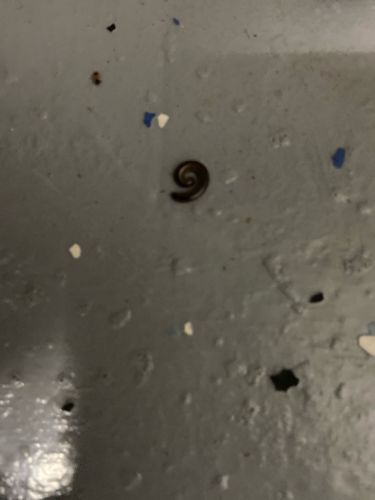Millipede
Scientific Name: Diplopoda
Order & Family: Varies (class Diplopoda)
Size: 2mm to over 28cm (most common species are 2.5cm to 10cm)

Natural Habitat
Damp, dark places with decaying organic matter, such as under logs, leaves, rocks, and in soil; sometimes found in basements or garages.
Diet & Feeding
Detritivores, primarily feeding on decaying plant material, dead leaves, and rotting wood. Some species may eat fungi or occasionally small insects.
Behavior Patterns
Nocturnal, seeking moisture and organic matter. When threatened, they often curl into a tight coil (as seen in the image) to protect their softer undersides. They move slowly and deliberately.
Risks & Benefits
Benefits include decomposing organic matter, thus contributing to nutrient cycling in ecosystems. Potential risks are generally minor: some species secrete defensive fluids that can cause skin irritation or stains, and if consumed by pets, can cause mild upset. They do not bite or sting and are not poisonous.
Identified on: 10/2/2025